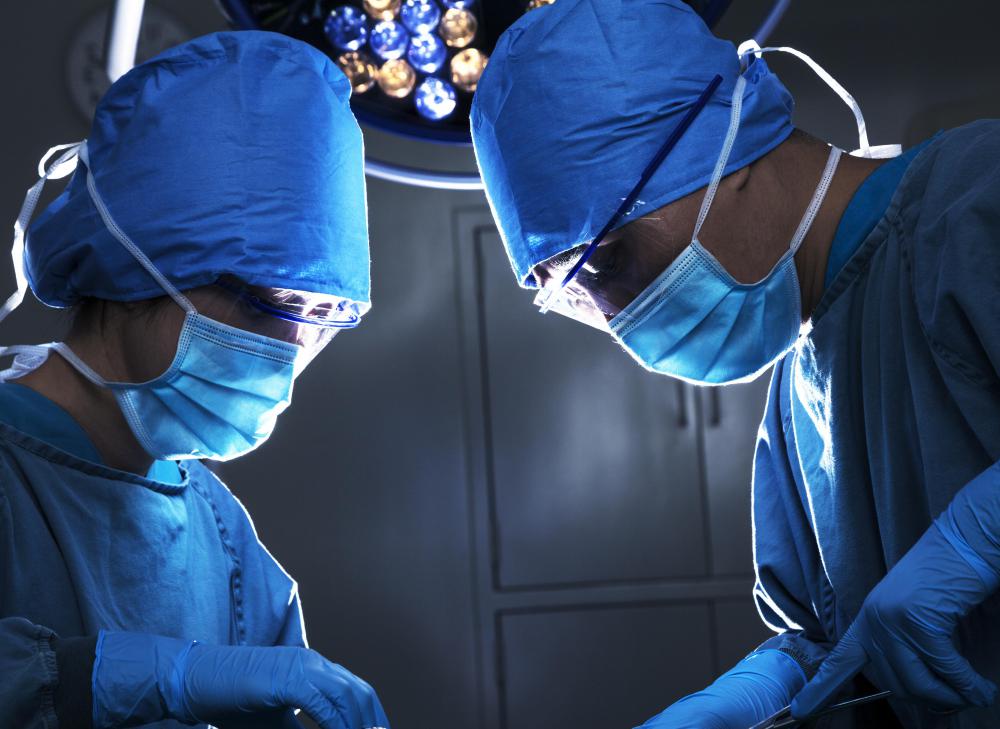At WiseGEEK, we're committed to delivering accurate, trustworthy information. Our expert-authored content is rigorously fact-checked and sourced from credible authorities. Discover how we uphold the highest standards in providing you with reliable knowledge.
What Is Pilonidal Sinus Surgery?
Pilonidal sinus surgery is a treatment option for recurrent pilonidal sinus infection. Depending on the presentation of the pilonidal sinus, surgery can range from drainage to excision of affected tissue. Invasive pilonidal sinus surgery is usually reserved for recurrent cyst formation, a condition known as pilonidal disease.
Contrary to its common association with the nasal cavity, sinus may be used to describe a cavity or tunnel within the skin. In the case of pilonidal sinus, the term is used to denote a passage or hole initiated and burrowed by a loose or stray hair. Located just above the buttocks, near the base of the tailbone, a pilonidal sinus can easily progress to form a cyst or abscess.

A sinus formation causes the skin to dimple, allowing a pocket, or cyst, to form just beneath the skin. In some cases, the cyst fills with bacteria and other foreign matter, including the inward growing hair, initiating infection and an abscess. As the infection worsens, the sinus adopts a pimply or inflamed, raised appearance and becomes tender to the touch.

An infected pilonidal sinus may be drained with the aid of a local anesthetic. The individual is generally given an oral antibiotic prior to surgery to alleviate infection. Often, the patient is instructed to finish the antibiotic as directed to help prevent recurrent infection. During the procedure, a small incision is introduced over the abscess so the collected pus and other foreign matter may be removed. The wound is left open and dressed appropriately to ensure proper healing.

When recurrent pilonidal cysts become an issue, more invasive pilonidal sinus surgery may be required. Individuals diagnosed with pilonidal disease generally undergo surgery to remove the affected tissue and prevent complication. The size of the cyst usually dictates the depth and length of the incision.
Pilonidal sinus surgery is generally performed with the intent of making the smallest incision necessary. When a cyst is considered relatively small, an incision is made directly over the growth so it may be completely excised. Sutures close the wound.

Depending on the size of the cyst, there are several surgical approaches that may be used to remove the growth. To lessen the risk for infection, the individual’s skin may be used to cover the wound. One such method is known as the Limberg flap. With this approach, a rhomboid-shaped incision is made over the cyst. Two of the sides are cut so a “flap” is made that may be lifted to allow access to the cyst. Once the excision is completed, the flap is lowered and stitches are made to close the wound.

The surgical approach is generally determined during a consultation when the patient may ask questions to help him or her prepare. Pre- and post-operative instructions are given to the patient at this time. Medications that may interfere with blood clotting or complicate surgery may be temporarily discontinued. As with any invasive medical procedure, pilonidal sinus surgery does carry a risk for complications, including infection and unnecessary bleeding.
AS FEATURED ON:
AS FEATURED ON:
















Discuss this Article
Post your comments